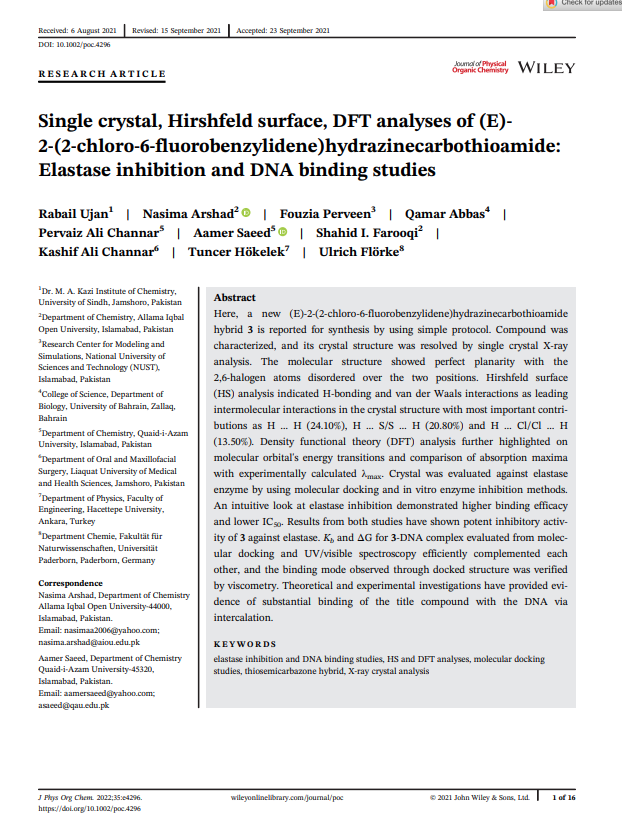Potential role of hydrazinyl 1,2,4‑triazoles derivatives as acetylcholinesterase inhibitors: synthesis, biological evaluation, kinetics mechanism and molecular docking and simulation studies
Linked Agent
Channar, P.A, Author
Ejaz, S.A, Author
Saeed, A, Author
Alharbi, F.F, Author
Shamim, T, Author
Aziz, M, Author
Ujan, R, Author
Kandhro, G.A, Author
Channar, S.A, Author
Abbas, Q, Author
Hussain, M, Author
Title of Periodical
Chemical Papers
Country of Publication
Kingdom of Bahrain
Place Published
Sakhir, Bahrain
Publisher
University of Bahrain
Date Issued
2023
Language
English
English Abstract
Abstract:
In the current study, total six hydrazinyl 1,2,4-triazoles derivatives (5a–5f) are reported. A new series of pyridine substituted 1,2,4-triazoles was synthesized and tested for in vitro studies, acetylcholinesterase (AChE) inhibition assay, kinetics mechanism studies and chemical characterization (1HNMR and 13CNMR analysis). The acetylcholinesterase inhibition activity of the compound 5f (IC50±SEM=0.0249±0.01 µM) was maximum as compared to the rest of the derivatives. Results of kinetics mechanism showed that synthetic compound (5f) had inhibitory efect on enzyme in a competitive manner and its Ki Value was 0.025 µM. These fndings were also supported by molecular docking studies to rule out the binding interactions in the molecules. In addition, comprehensive molecular dynamics simulations were performed to investigate the stability of protein–ligand complex. It was revealed that RMSD fuctuations demonstrated stable pattern. The data showed that almost all derivatives are best inhibitors of AChE in comparison to neostigmine. Therefore, it can be suggested that these derivatives must be explored further at molecular level so that their role can be identifed as lead molecules in drug discovery for the management of age related neurodegenerative diseases.
Member of
Identifier
https://digitalrepository.uob.edu.bh/id/66efa3a9-ec7a-4030-a11d-9cb610b80873
Same Subject
